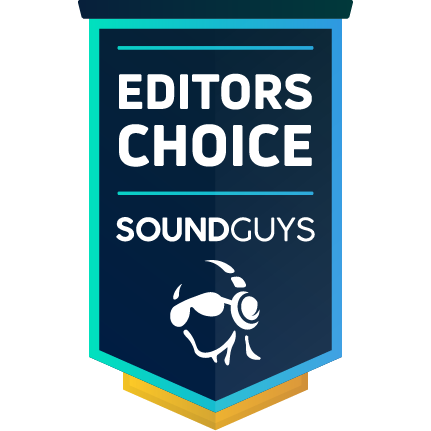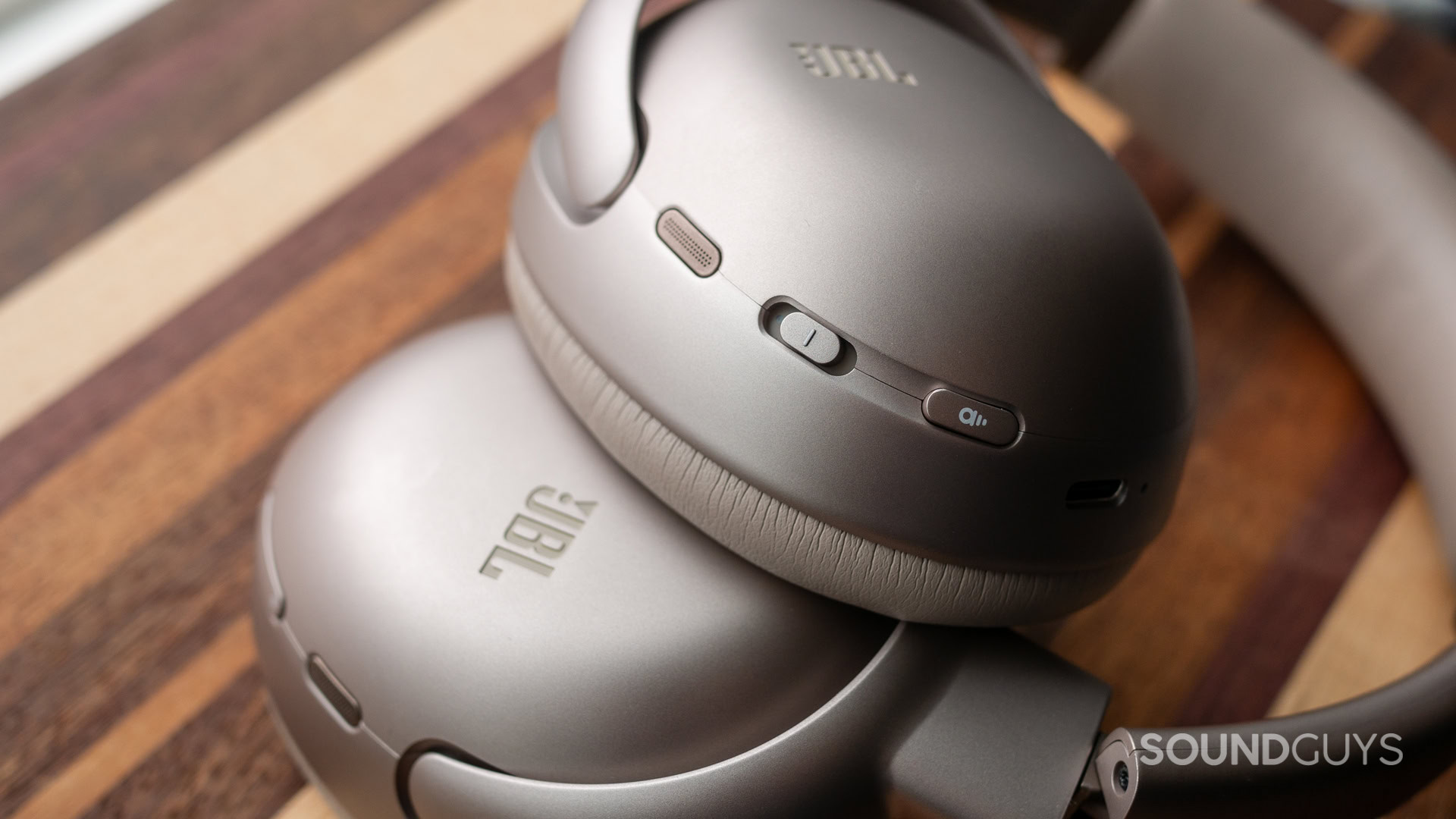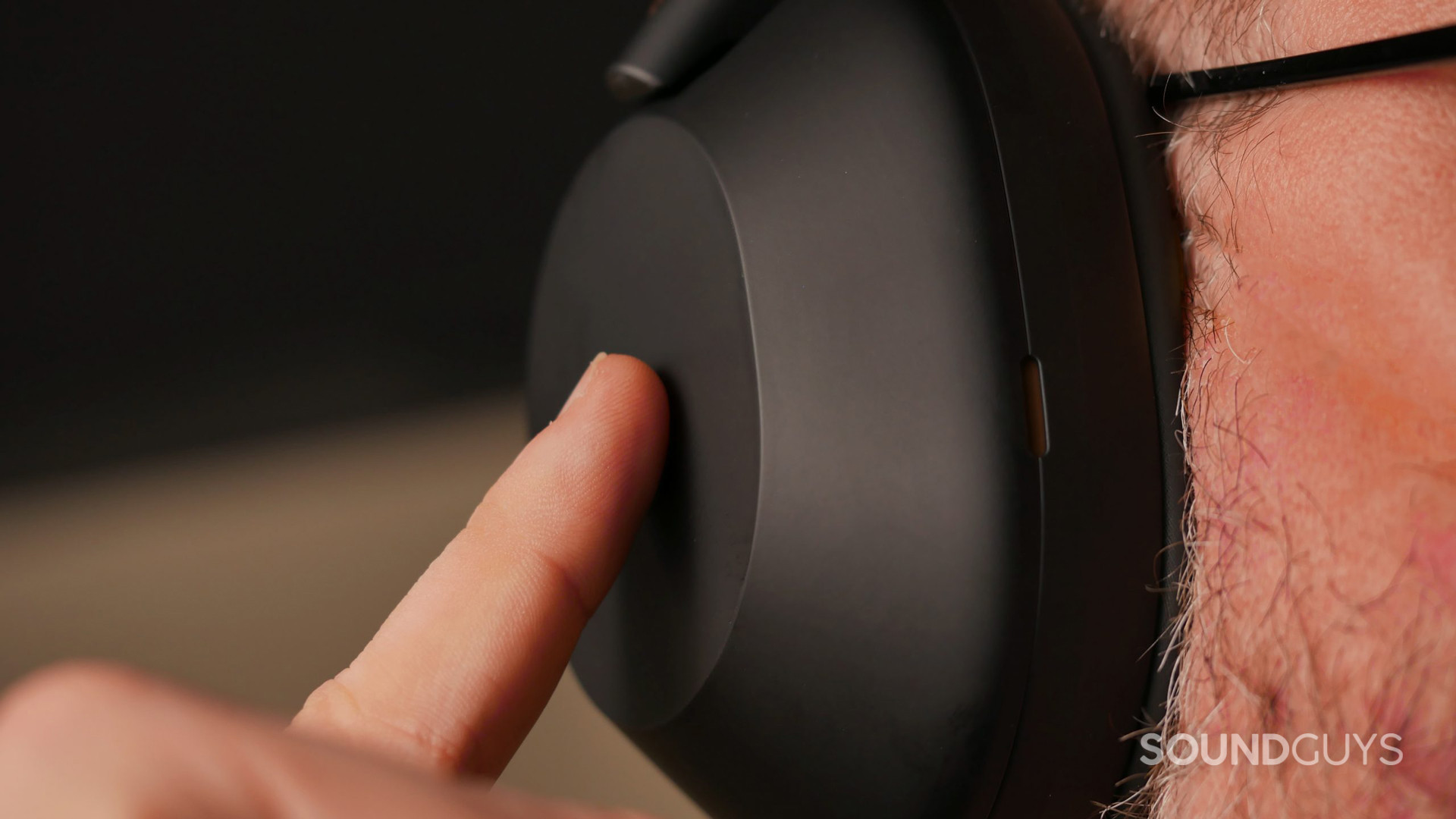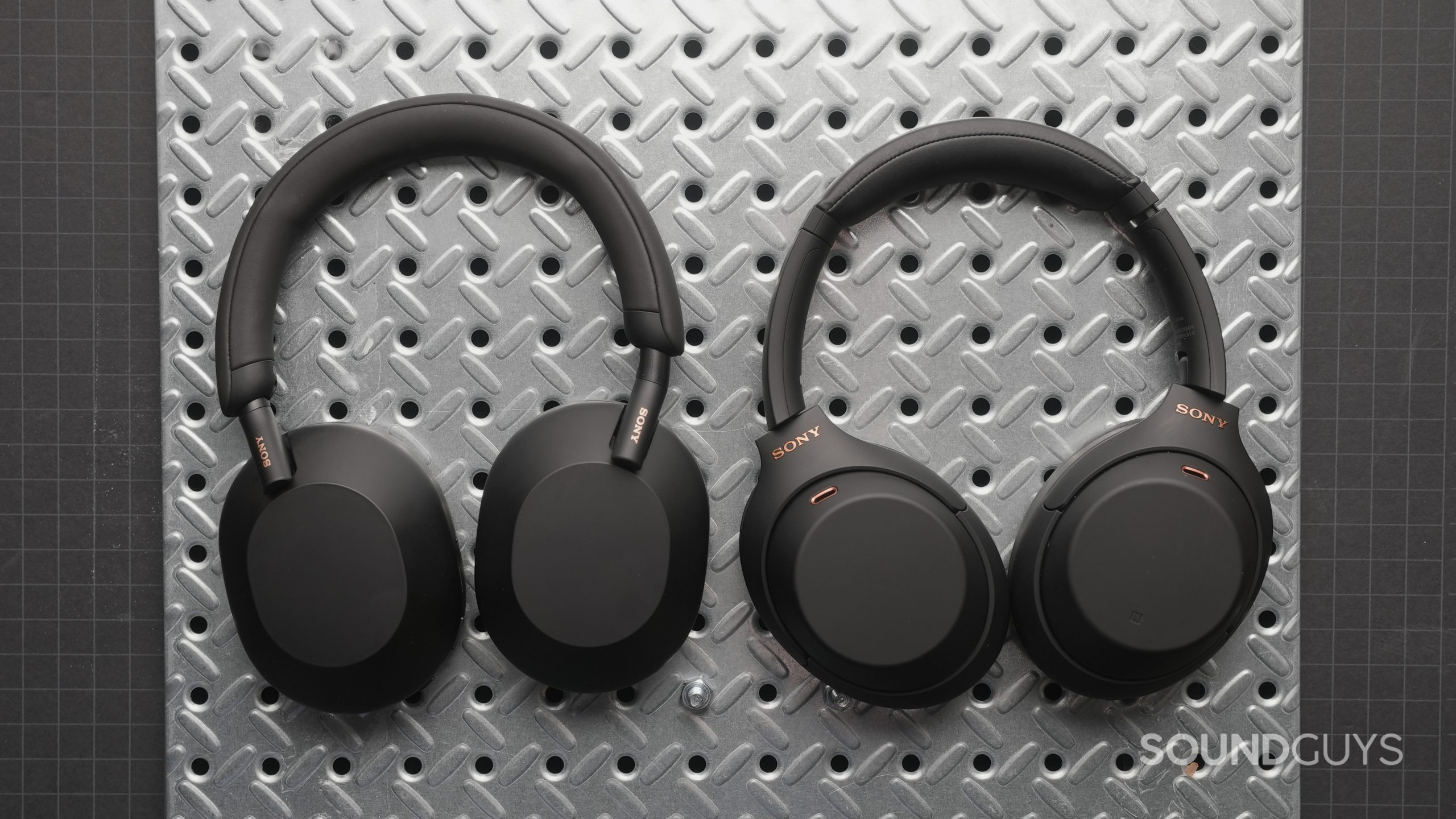All products featured are independently chosen by us. However, SoundGuys may receive a commission on orders placed through its retail links. See our ethics statement.
JBL Tour One M3 vs Sony WH-1000XM5: Deposing a king
Published onApril 22, 2025




Now that there’s a new kid on the block, the JBL Tour One M3, many people will naturally want to know whether or not they should take a look at the previous king of active noise canceling (ANC) headphones: the Sony WH-1000XM5. So, which set of cans makes the best case for your dollar in the JBL Tour One M3 vs. Sony WH-1000XM5 matchup? Let’s dive in.
Editor’s note: this article was published on April 22, 2025, and is the first version of the article. Updates will follow as the market changes.
What’s it like to use the JBL Tour One M3 compared to the Sony WH-1000XM5?

ANC headphones may not make much of an effort to break the mold, but it’s the product line of the Sony WH-1000XM5 that really cemented the archetype. When people think about “noise canceling headphones,” either a Sony WH-1000XM series headphones or Bose headphones — and that’s no accident. They’ve been popular, strong performers for many years now, and it seems like the category is maturing towards chasing tech.
However, neither of these headsets are really geared toward all users. For example, both are a poor choice for workouts, as neither has an ingress protection rating against moisture — meaning neither product is rated to withstand too much sweat, even if they won’t die from a bit of glisten.

That said, these headphones are comfortable for long listening sessions, making them perfect for commutes, flights, and office work. Not only do they offer excellent battery life, but the option to choose when to let in sound while excelling at getting rid of it when you don’t want it. It’s just gravy that the mics are decent as well. Both headphones are extremely competent daily drivers.
In addition to physical buttons, and the SMART Tx remote/transmitter accessory, you can control the JBL Tour One M3 through a series of taps on the right ear cup.
| Input | Right earcup |
|---|---|
Single tap | Play / pause |
Double tap | Next track |
Triple tap | Previous track |
Long press | Voice assistant |
The main controls for the Sony WH-1000XM5 are a series of buttons, combined with gestures on the back of the right ear cup.
| INPUT (touchpad) | ACTION |
|---|---|
Swipe up | Volume up |
Swipe down | Volume down |
Swipe forward | Track forward |
Swipe back | Track back |
Hold (center) | Voice assistant |
Double tap center | Pause / resume |
Cup hand | Ambient sound passthrough |
Does the JBL Tour One M3 or Sony WH-1000XM5 have more features?
It should not surprise anyone to learn that the JBL Tour One M3 has more top-of-the-line features, as the headphones were released in April of 2025. The Sony WH-1000XM5, being almost two full years older, don’t support things like LE Audio, transmission of audio to other headsets, etc. However, the Sony WH-1000XM5 still supports Sony’s proprietary 360 Reality Audio with head tracking, Find My device, custom EQ, and more.

The JBL Tour One M3 also adds Auracast support, multiple passthrough modes, and music broadcast — on top of spatial audio, Find My device, and EQ presets. But where the Sony WH-1000XM5 requires an app for these, many of the advanced features of the headphones can be toggled by the remote without the app. This is excellent for convenience’s sake, but a bit difficult to have yet another battery to charge. Also, the remote is easily lost! Just be sure to make use of the included case and you should be fine.
Both the JBL Tour One M3 and Sony WH-1000XM5 have other standard features like transparency modes, and automatic ear detection to control features like auto-pause. Each app — Sony’s Sound Connect and JBL Headphones — offer a high level of customization, including over EQ presets, ANC level, passthrough modes, and audio quality toggles.
How do the JBL Tour One M3 and Sony WH-1000XM5 connect?

Both the JBL Tour One M3 and Sony WH-1000XM5 are primarily Bluetooth headphones; however, the JBL Tour One M3 also allows you to connect to just about everything. Where the Sony WH-1000XM5 can use wired 3.5mm, and Bluetooth over SBC, AAC, and LDAC — the JBL Tour One M3 can do wired over USB, wireless over Bluetooth 5.3 (SBC, AAC, LC3, LDAC), and wireless over the SMART Tx remote/transmitter. Given that the JBL Tour One M3 is one of the most source-agnostic headphones ever made, it’s not terribly surprising to me that the Sony WH-1000XM5 falls a little short here. It’s a couple years old, however, so I’m not going to be too harsh on it.
Is battery life better on the JBL Tour One M3 or Sony WH-1000XM5?
The JBL Tour One M3 drubs the Sony WH-1000XM5 in terms of battery life. With ANC on, and level-matched to the same output, the JBL Tour One M3 withstood our standardized test for 55 hours and 37 minutes, while the Sony WH-1000XM5 was able to last 31 hours, 53 minutes. This one’s no contest, but to keep things in perspective: you’re not going to listen to your headphones for an entire day straight. You’re going to take extended breaks, and very few people will listen for more than 10 hours in a day. Both headphones should easily eclipse a week’s worth of commutes before needing a recharge.
Do the JBL Tour One M3 or Sony WH-1000XM5 block noise better?
Loading chart ...
While both headsets attenuate noise among the best of ’em, the JBL Tour One M3 is the winner here by about 3%. Not exactly a decisive victory, eh? Still, it bears noting that you really can’t pick wrong if you’re looking for a high level of ANC. Both sets of headphones will allow you to toggle a passthrough mode, as well.
Loading chart ...
Even if the “loser” in this matchup, the Sony WH-1000XM5, falls behind the JBL Tour One M3, it’s by a really difficult-to-hear margin. Both of these products are outstanding ANC headphones, and you can’t choose wrong in this matchup.
Do the JBL Tour One M3 sound better than the Sony WH-1000XM5?
Both sets of headphones sound decent, but they also have their issues. However, using the apps or remote to change the EQ presets will net you better results.
Multi-Dimensional Audio Quality Scores (MDAQS)
- Timbre (MOS-T) represents how faithfully the headphones reproduce the frequency spectrum and temporal resolution (timing information).
- Distortion (MOS-D) represents non-linearities and added noise: higher scores mean cleaner reproduction.
- Immersiveness (MOS-I) represents perceived source width and positioning: how well virtual sound sources are defined in three-dimensional space.
Out of the box, it’s more likely that most people will prefer the sound of the Sony WH-1000XM5. However, by using the included EQ presets, the JBL Tour One M3’s audio quality shoots up. You can also adjust the sound of the Sony WH-1000XM5. For best results with either, you’ll need to tinker a bit with the apps of the JBL Tour One M3 or Sony WH-1000XM5. However, the performance floor of the Sony WH-1000XM5 is higher than that of the JBL Tour One M3.
Objective Measurements
Loading chart ...
The Sony WH-1000XM5 has a more traditional response with high bass and treble, while the JBL Tour One M3 has something a bit closer to our preference curve — save for wonkiness in the highs. While many look for a more dynamic response like that of the Sony WH-1000XM5, that bass shelf starting around 300Hz will make things sound a bit off.
Loading chart ...
On the other hand, the strong dip in the highs exhibited by the JBL Tour One M3 will also sound quite off to most people, as this range contains a lot of room effect, “detail,” and sounds important for speech intelligibility. But once you turn on the EQ presets, most of them will sound much better to most people. The Jazz EQ preset in particular has much more bass and treble energy, and may be a better comparison to the WH-1000XM5.
Do the JBL Tour One M3 or Sony WH-1000XM5 have a better microphone?
As the JBL Tour One M3 and Sony WH-1000XM5 are both products meant to operate as a primary sound device for smartphones, they are understandably used for phone calls quite often. You can hear our samples collected in a simulated environment below.
JBL Tour One M3 microphone demo (Ideal conditions):
Sony WH-1000XM5 microphone demo (Ideal conditions):
JBL Tour One M3 microphone demo (Windy conditions):
Sony WH-1000XM5 microphone demo (Windy conditions):
Which microphone sounds best to you?
JBL Tour One M3 vs Sony WH-1000XM5: Price and availability
Whereas the JBL Tour One M3 just hit shelves for $399, and the Sony WH-1000XM5 has been around for a couple of years — it’ll probably be pretty easy to find either one of these ANC headphones. However, since the Sony WH-1000XM5 is so old now, we’ve seen it fall in price quite often; far below where it debuted at. Additionally, it’s possible that this product will get superseded soon, as Sony tends to run with a 2 year refresh cycle on its top-flight audio products.

If Sony WH-1000XM5 is discontinued in the future, you should be able to find it in the clearance bins of big box stores and online retailers for a considerable discount. In that event, you could probably pick up the headphones for only a couple hundred bucks instead of the full $400.
Should you get the JBL Tour One M3 or Sony WH-1000XM5?

While both headphones are rock-solid buys, there are definitely a few reasons you may want to pick one over the other. Depending on your needs, our recommendation may change from person to person, so definitely consider the following before making a choice — assuming your final decision is between the JBL Tour One M3 vs Sony WH-1000XM5.
Choose the JBL Tour One M3 if:
- You want your headphones to last several years.
- You want to share your tunes with several other people, or have kids.
- Battery life is very important to you.
- You hate using apps to access advanced headphone features.
- You want to use wired sources wirelessly.
Choose the Sony WH-1000XM5 if:
- You’re hunting for a bargain.
- Advanced features are less important to you.
- You use a streaming service that uses 360 Reality Audio.
While there’s no clear, objective, winner. We think that more people will like the JBL Tour One M3 for longer, given its ability to use features that will become more common as time goes on. Additionally, users with families should appreciate the ability to broadcast audio from the headphones’ transmitter accessory — whenever Auracast devices get to be more popular, anyway.

Outstanding microphone
Useful app features
VS Product Z or alternative options
If you’re looking for credible alternatives to the JBL Tour One M3 and Sony WH-1000XM5, you can always plumb our list of best noise canceling headphones for ideas. However, it should be pointed out that because the Sony WH-1000XM5 is so old now that there’s a high probability that a successor is coming this year. Sony tends to wait two years to refresh its flagship headphones, and wouldn’t you know it: it’s been 2 years since the launch of the WH-1000XM5.

In the event that you absolutely need a set of ANC headphones right now, the best competitors I can come up with are the Focal Bathys ($699 at Amazon), Bose QuietComfort Ultra ($429 at Amazon), and for the ultimate bargain-hunter: the Sony ULT WEAR ($199.99 at Amazon). While all of these headphones lack a piece of the puzzle offered by the JBL Tour One M3, their age should see prices be a bit more competitive. Additionally, if you have a smartphone that supports Snapdragon Sound, you’ll want to make the most of it with something that supports aptX Lossless like the Bose headphones do.
Frequently asked questions
No. As neither product is rated to withstand moisture, they may be more liability than gym buddy.
No.
Yes.
Yes, although the JBL Tour One M3 doesn’t have true Multipoint.
Yes. In theory, anyway.
Yes. You can see the reviews for samples.
Yes.
The headphones are decent enough for anything that isn’t an FPS, as Bluetooth will often introduce a small amount of latency, and it can be a pain to pair your headphones with a console.
Yes. However, the Sony WH-1000XM5 can only use an analog 3.5mm connection wired, while the JBL Tour One M3 can use direct USB in.
Yes.
Yes. However, you may have to get creative with the pairing process depending on the television’s audio out.
Yes.